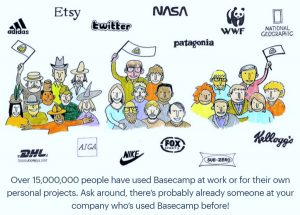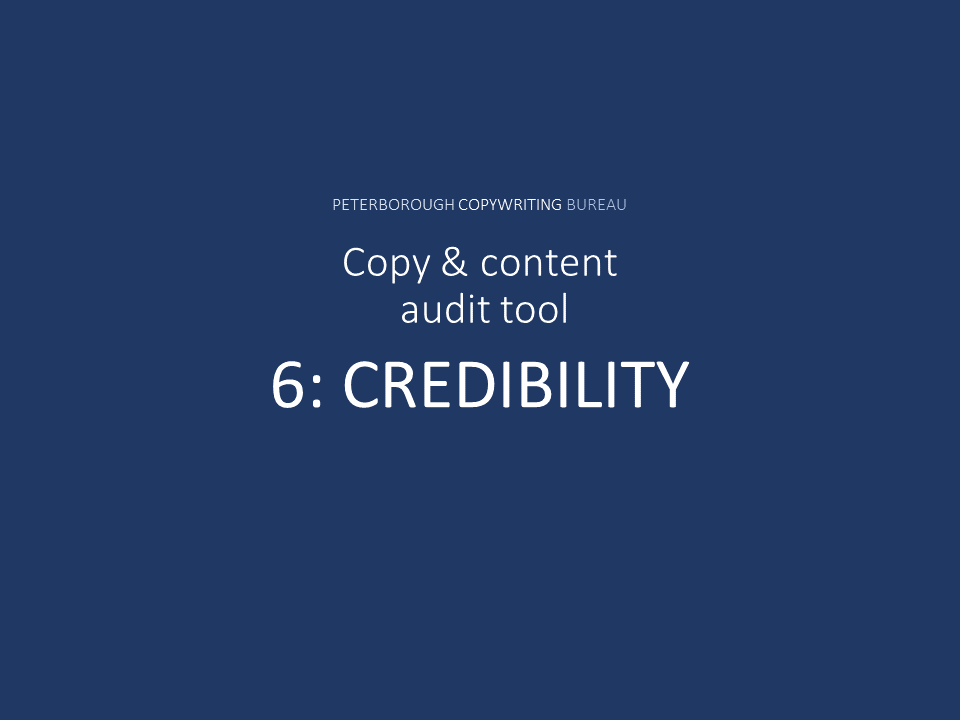Is your content working hard to raise your credibility among readers? Take a fresh look and see if you can identify areas for improvement.
NOTE: This is part 6 in a ten-part serialisation of my eBook. Please read the introduction first if you are new to the tool.
Your credibility reality check
This is a quick two-step process for assessing the credibility of a piece of content.
1. Will the content give readers a better feeling about you?
Give the content a read and ask yourself this simple question:
If your most wanted potential customer were to read the piece, would they be more willing to do business with you as a result?
Often when reviewing existing content, you will come across something that was perhaps ‘churned out’ rather than really thought through and laboured over. If you spot something like that during your audit, it’s time for a reality check.
Is the content doing you any good? Is it really likely to take a reader to a place where they think better of your company and your ability to help them? If the answer to these questions is ‘no’ you can assess the individual elements that may need attention…
2. How many credibility-building components are included in the content?
See how many of these components are in the piece of copy/content you are reviewing:
-
Numbers/statistics.
-
Information from external experts.
-
Information from internal experts.
-
Links to additional content.
-
Helpful content.
-
Client company logos.
-
Trust/social proof elements.
If the content is lacking some of these elements, below are some solutions to fix the problems.
Some solutions for ‘credibility’ problems
Let’s take the above list as the basis for things to add to your content to build credibility:
1. Numbers/statistics.
Do you have any stats that strengthen claims you are making about the performance of your organisation, product or service? Remember to always say where those numbers come from, ideally referencing reputable external sources.
2. Information from external experts.
Content created in partnership with credible influencers will likely carry more weight than content you produce on your own. Who do you (or colleagues) know across your industry? Can you involve them?
If you can line up a call with a contact in the industry it can open the door to creating all kinds of great content, as in this example:

But what if you can’t co-create content with anyone noteworthy? No problem, just add a quote or two from reputable sources, even if you have no connection or relationship with them. Here’s an example in an article about weight loss published on experiencelife.com:

3. Information from internal experts.
Interview the experts within your organisation. Involve the people who know their stuff. It might only take a quick chat with a colleague to get an extra paragraph or two that significantly lifts your piece.
4. External links.
You may not want to link people away from your content. But including a link or two to credible sources that back up anything you are saying makes you appear more involved and engaged in what’s happening across your sector.
5. Helpful content.
Too much salesy content can ruin your credibility. You can look desperate. Sell less. Help more people, more often. (Unless, of course, the content really is purely a sales piece.) Sometimes removing some of the salesy parts of the copy is all it takes to get a better balance between sales and helpful.
6. Company logos.
If you have customers, do you have permission to feature their logos? It can look great, like this from Basecamp.com:

7. Trust/social proof.
Do you have any customer testimonials? Great reviews on Trustpilot? Lots of lovely comments left by Facebook users? Then use them as much as you can without getting too annoying. Here’s an example from Kissmetricshq.com:


